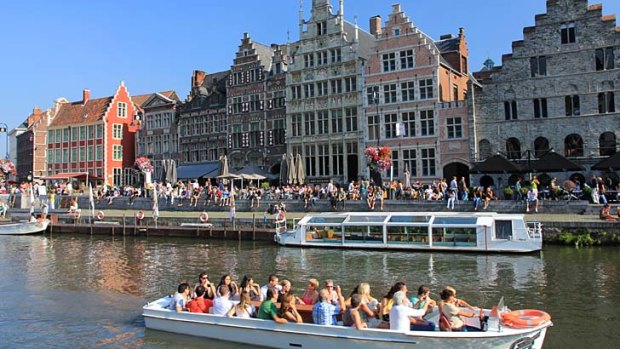
Rich history: Ghent waterways.Credit: flickr.com
The past is never forgotten in Belgium but its present has plenty to offer, writes David Whitley.
Heads are bowed, arms are crossed and tears are slowly trickling down cheeks as the four silver-haired buglers run through the mournful sounds of The Last Post.
This happens every night under the Menin Gate in Ypres, in memory of the hundreds of thousands of men who died fighting in Flanders Fields. The names of 54,896 of them are engraved on the giant archway that has become the home of ritual remembrance.
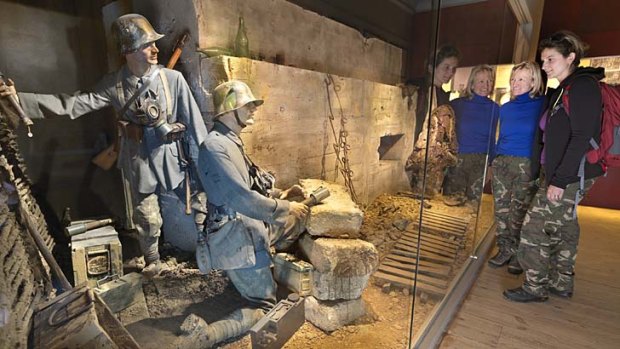
The Memorial Museum Passchendaele 1917.Credit: Arthur Los/flickr.com
During World War I, the bulging frontline on the map around Ypres shifted just 8 kilometres in four years. The mud-soaked, trench-lined fields in the surrounding area saw the worst of the war's senseless slaughter. But it seems the desire to never forget is stronger than ever - the number of Australians visiting Flanders has risen from 26,000 in 2003 to 42,000 in 2012, and is expected to soar with the 100th anniversary of the start of World War I this year.
The surprise with Ypres is that it is not merely a shrine. After the war, a conscious decision was made to rebuild it from the rubble and let it become a living town again.
Perhaps unexpectedly, the night fizzes with late-opening chocolate shops and bars catering for Belgian beer enthusiasts.
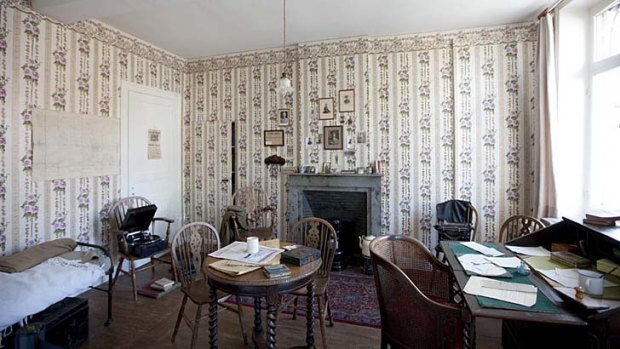
Talbot House in Poperinge.Credit: flickr.com
Western Flanders has always been Belgium's prime beer-making region. It is scattered with small breweries and the town of Poperinge has a museum devoted to the hops that grow so well in the surrounding fields. The newest brewery, however, has a wartime connection.
The Brouwerij De Kazematten is inside an archway of the ramparts surrounding Ypres, and the name of the beer - Wipers Times - gives away what was once here. This was where The Wipers Times - the whimsical, mildly satirical magazine produced by the soldiers - was printed.
Brewer Koen Hugelier says there is another subtle nod in the brewing process. "We wanted to make reference to the dates of the war, so there are 14 grams of sugar per 100ml in the blond beer and 18 in the darker beer."
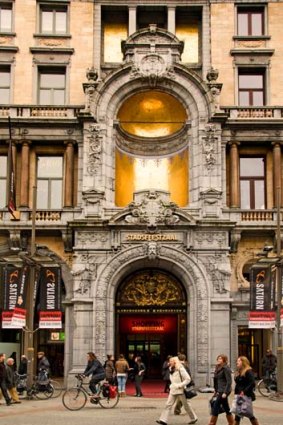
Meir, the main shopping street in Antwerp, Belgium.Credit: Alamy
The centrepiece of reconstructed Ypres, however, is the huge Cloth Hall, which would draw adoring wows in any city on earth. In mediaeval times, when Ypres was a prosperous cloth-trading town, this Gothic behemoth was both marketplace and warehouse.
The city that really grew rich on the cloth trade, however, was Ghent. In the Middle Ages, it was the biggest textile town in the whole of Europe, and Paris was the only European city with a larger population.
It is possible to explore the glory days at the Museum Industrie Arbeid en Textiel, which charts the history of spinning and weaving from the Neolithic hunter gatherers in 8500BC to today's high-tech garments. Floors are filled with ancient spindles and progressively more modern looms, and they come with reminders that textiles spurred the industrial revolution.
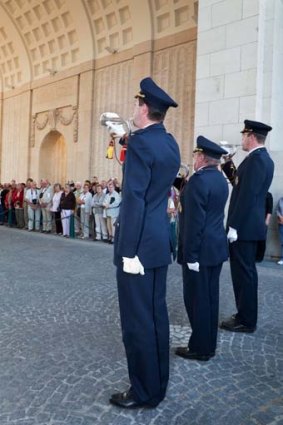
Buglers from the firefighting corps playing the Last Post under the Menin Memorial Gate.Credit: Alamy
Much of Ghent's photogenic look and engagingly feisty character can be put down to it being the only properly industrialised city in Flanders throughout the 19th century. The canals were built to ship the material in and finished linen out. The Gravensteen castle was turned into a textile mill and the ensuing housing shortage meant workers squeezed into the narrow streets and cramped houses of the surrounding Patershol area.
Ghent is also where the Labour movement took hold. It still has a reputation as a "red" city today - and a place open to new ideas. Hence, if you want to find high-quality but super-laid back vegetarian restaurants or jazz clubs that throw in all genres for all ages, it is the most fun city in Belgium.
Ghent might still be the go-to place for functional textiles, but Antwerp is the city for fashionable ones. In the late 1980s, a loose collective of six Antwerp designers - led by Dries Van Noten - burst on to the world's catwalks. The Antwerp Six sparked a shopping revolution in the city, and now the Sint-Andries district to the south of the historic centre is densely packed with innovative boutiques.
The style capital tag is a new thing, however - Antwerp's rise to prosperity came on the back of its port, which is still one of the biggest and busiest in the world.
The docklands area has recently undergone a revamp and the latest opening is the Red Star Line Museum. Inside the trans-Atlantic shipping company's former control station, the museum tells the story of the 2 million Europeans for whom this was the last stop before starting a new life in North America.
It is the scale of the operation that strikes home. Hundreds would arrive in Antwerp daily, having dodged pickpockets and con men on arduous rail journeys across the continent. They would find themselves competing for space in grotty boarding houses, then putting their luggage in for industrial-scale sterilisation and undergoing production line-style medical examinations.
But among this great wave of migration are poignant individual tales, such of that of Anastacia Mensik. Her father was the mayor of a village in what is now the Czech Republic. In 1901, he predicted the war that was to come 13 years later, and sold everything to buy the tickets that would get his family to the other side of the world. They arrived in Antwerp and, subsequently, Tacoma in Washington state, with just their clothes and some iron tools.
Suddenly, themes from the World War I sites start flooding back: young people, not fully aware of what they are getting into, in a strange land and afraid. Again, it is impossible not to be moved.
The writer was a guest of Visit Flanders.
FIVE MORE THINGS TO SEE IN FLANDERS
IN FLANDERS FIELDS
Inside the Ypres Cloth Hall, this high-tech and immersive museum gives the best overall view of World War I in Belgium. The stories you are presented with are matched to your age, gender and place of origin.
See inflandersfields.be.
MEMORIAL MUSEUM PASSCHENDAELE 1917
Devoted to the bloodiest battle of the Flanders campaign, this expansive museum in Zonnebeke has also recreated underground dugouts and trench systems. Walking through them gives an idea of the dreadful, claustrophobic conditions suffered by the soldiers, and that's without the added mud and rain.
See passchendaele.be.
TYNE COT CEMETERY
Nearby, the largest of the Commonwealth War cemeteries is the burial place of nearly 12,000 soldiers, and most of the gravestones are unnamed. It's a sombre, eerily peaceful place - and new plots are added regularly as bodies are found 100 years later.
See cwgc.org.
POLYGON WOOD
A total of 5770 Australians died in just two days at the Battle of Polygon Wood. The cemetery is outside the grove, while the obelisk memorial to the 5th Australian Division is among the trees via a small path. See cwgc.org.
TALBOT HOUSE
During the war, the town of Poperinge was slightly behind the front line and was used for R&R. Talbot House was where many of the servicemen stayed, enjoying the no-rank-here philosophy and kindly eccentricity of host chaplain Philip "Tubby" Clayton. See talbothouse.be.
Six other WWI sites
SARAJEVO, BOSNIA AND HERZEGOVINA
The Great War kicked off when Serbian nationalist Gavrilo Princip shot the Austro-Hungarian Empire's Archduke Franz Ferdinand on June 28, 1914. Sarajevo Insider does tours taking in the spot where the assassination took place, and the story of how inept the whole operation was is well worth hearing. See sarajevoinsider.com.
THE SOMME, FRANCE
South of the Flanders Fields, the Battle of the Somme in northern France from July to November 1916 is synonymous with grim trench warfare. For Australians, the key sites are the memorials at Pozieres, Le Hamel and Villers-Bretonneux. Also worth seeing are the Somme 1916 Museum in Albert, which delves into trench life, and the wider-ranging Museum of the Great War in Peronne. See visit-somme.com.
GALLIPOLI PENINSULA, TURKEY
Visiting Gallipoli for the dawn service on Anzac Day has become something of a rite of passage, but the infrastructure struggles with the crowds. Go at other times of the year, and there's a chance to properly take in the key sites such as Anzac Cove and the Lone Pine Memorial - which hosts the main Anzac cemetery. The Canakkale Martyrs Memorial is also worth seeing to get the Turkish view of what, for them, was a heroic defence of the Gallipoli Peninsula. The museum inside has plenty of artefacts found on the battlefields dating back to the deadly 1915 campaign. See anzacsite.gov.au.
FORT NEPEAN, VICTORIA
On August 5, 1914, shortly after war was declared, the German steamer Pfalz tried to sneak out of Port Phillip Bay. The shot fired at it from the fortifications at Fort Nepean at the end of the Mornington Peninsula is regarded by many to be the first Allied shot of World War I. The fortifications are now part of the Point Nepean National Park and can be explored with audio tours. See parkweb.vic.gov.au/explore/parks/point-nepean-national-park.
ALBANY, WA
The first Anzac troops set sail for Europe in November 1914, leaving from Albany in Western Australia. For many it was their last sight of their home country. The dawn service tradition began at the city's St John's Anglican Church in 1930, and the Anzac Peace Park was opened in 2010. Pine seedlings from Gallipoli and poppy seeds from Flanders are planted there. A new National Anzac Centre opens in November.
See anzacalbany.com.au.
THE AUSTRALIAN WAR MEMORIAL
The First World War galleries are closed for renovation until later this year, but the temporary Anzac Voices exhibition features letters and diaries from the soldiers on the frontline. The Hall of Valour tells the stories of the Australians awarded the Victoria Cross for their bravery, the Tomb of the Unknown Soldier and the bronze panels of the Roll of Honour commemorate those who died, while the Last Post ceremony at 4.55pm every day is a solemn, moving affair. See awm.gov.au.
TRIP NOTES
GETTING THERE
Etihad flies from Sydney and Melbourne to Brussels, changing in Abu Dhabi. See etihad.com, phone 1300 532 215.
STAYING THERE
In Ypres , try the well-run, central Albion Hotel. Rooms from €115 ($168). See albionhotel.be. In Ghent, the architecturally spectacular, waterside Marriott is a great choice. Doubles from €109. See marriottghent.com. In Antwerp, the friendly, park-facing Leopold is excellent value, with rooms from €78. See leopoldhotelantwerp.com.
TOURING THERE
Ypres, Ghent and Antwerp are easily linked by short train journeys. See belgianrail.be. For those wanting to hire a car, all major international companies have outlets at Brussels airport. In Ghent, check out MIAT (Museum over Industrie, Arbeid en Textiel); see miat.gent.be. In Antwerp try, the Red Star Line Museum; see redstarline.be.
MORE INFORMATION
Sign up for the Traveller Deals newsletter
Get exclusive travel deals delivered straight to your inbox. Sign up now.